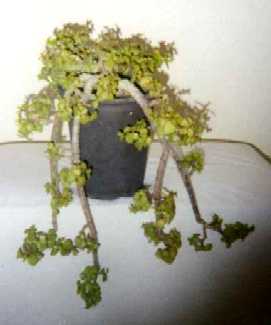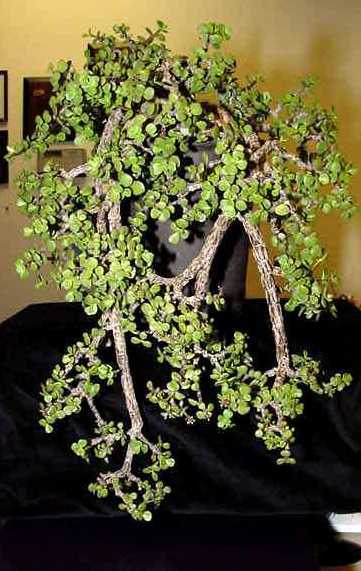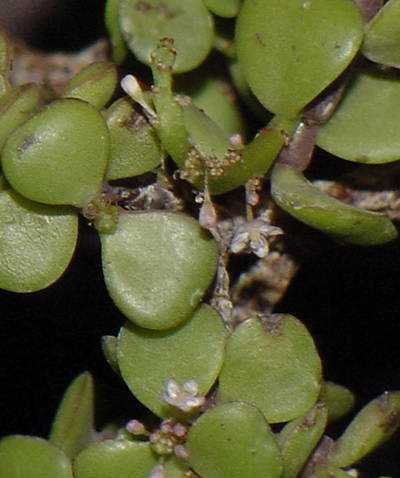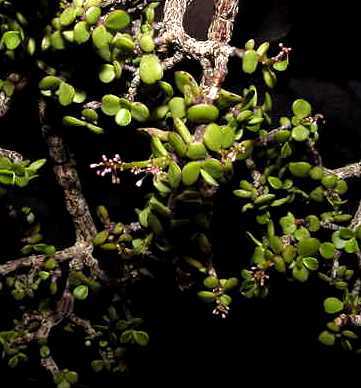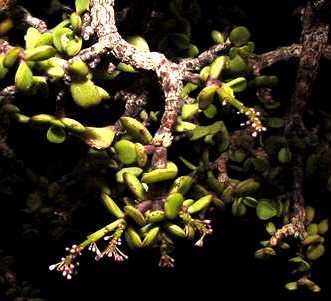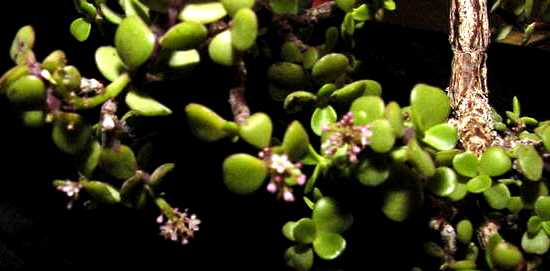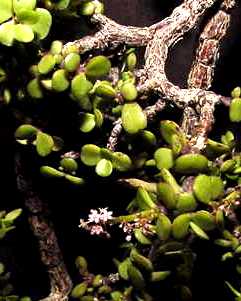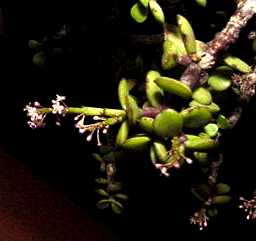Mid-2003: 18" maximum height, 13" wide,
16" front to back, trunk is 1-1/2" across at base;
Unlike the blooming plants described in the various articles, this specimen was not unduly stressed. For the past year it has been sited facing eastward, getting all-morning and early afternoon full sun. It is watered almost every day from mid-April through mid-October to encourage lush growth; fed full-strength alternating fertilizers on weekends during that time period as well. The irony is that this was one of the plants taken to the Kingman bonsai class in mid-May for trimming and pinching practice. It was only barely touched. Full attention may have ended its blooming for this year and we would never have known it. No sign of blooming seen on the parent plant, sibling casade or other P. afra 's in RJB's collection. If there is, this page will definitely be updated! I have not been able to determine if any other bonsai Elephant Food in Arizona has ever been known to bloom. A co-worker informed me, however, that her rooted cutting [non-bonsai] from a cutting from a specimen plant (growing in Whittier, CA but not John Naka's) is positioned in a sunny windowbox in her kitchen and that has bloomed before. Maybe it's just this area... |
